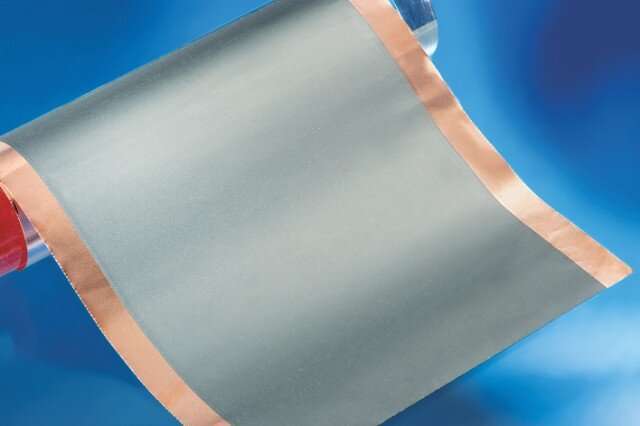
High-performance battery cells are a crucial prerequisite for electrifying the mobility sector. With this in mind, researchers at the Fraunhofer Institute for Laser Technology ILT in Aachen have developed innovative laser-based technologies for producing lithium-ion batteries—which, in comparison with those produced conventionally, can be charged more quickly and have a longer service lifetime.
Furthermore, laser-based drying in the water-based electrode coating process is significantly more efficient. Fraunhofer ILT will be presenting a demonstrator to showcase its forward-looking laser technologies for battery cell production at the Fraunhofer booth (Hall 16, Booth A12) at the Hannover Messe 2023.
Whether they are used in stationary energy storage systems or in electric cars, buses, bikes and scooters, batteries will play a central role in the mobility of the future. This is why researchers around the world are working on improving battery technology. Scientists at Fraunhofer ILT in Aachen have recently developed two laser-based manufacturing technologies that save energy in production while also making it possible to create battery cells with higher power density and a longer service life.
One of the key steps in the production of lithium-ion batteries is the manufacturing of electrodes using graphite. For these electrodes, a copper foil is coated with a graphite paste using the roll-to-roll process and then dried in a continuous furnace at 160 to 180 degrees Celsius.
As well as consuming a large amount of energy, the gas-powered continuous furnaces, through which the copper foil is carried on a conveyor belt, take up a lot of space: They are between 60 and 100 meters long and dry up to 100 meters of foil per minute when operating on an industrial scale.
Efficient drying with diode lasers
The researchers at Fraunhofer ILT have now developed a system in which a diode laser carries out the drying process. The laser with a wavelength of 1 micrometer is combined with a special optical system that illuminate the electrode over a large area. The optics were specially designed for the drying system by Fraunhofer's industry partner Laserline.
Samuel Fink, group manager for Thin Film Processing at Fraunhofer ILT, explains the principle behind the process: "In contrast to the hot-air drying process, our diode laser projects a high-intensity beam onto the copper foil, which is coated with graphite paste. The jet-black graphite absorbs the energy. The resulting interaction causes the graphite particles to heat up and the liquid to evaporate."
The Fraunhofer technology provides a number of benefits: Compared to power-guzzling continuous furnaces, the diode laser is very energy-efficient, and the system emits very little heat to the environment. Furthermore, the laser drying system takes up much less space than conventional furnaces. "Drying with the diode laser will reduce the energy required by up to 50 percent and the space needed for a drying system on an industrial scale by at least 60 percent," Fink says.